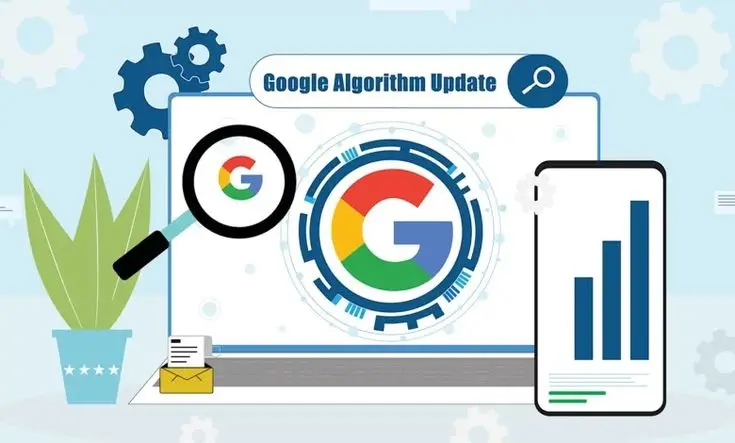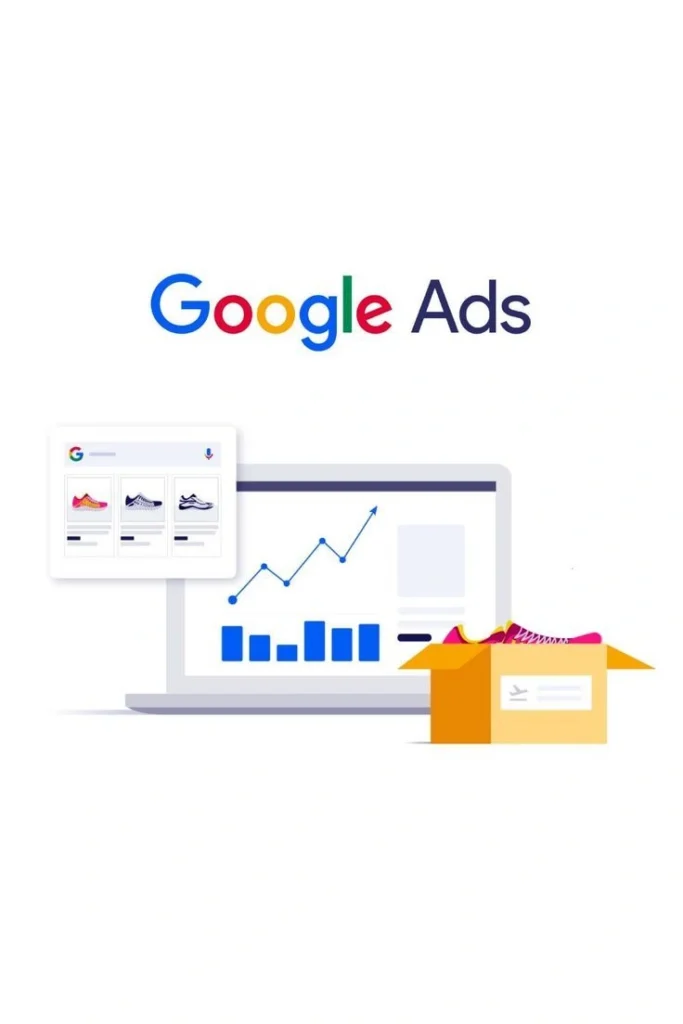The Role of a Digital Marketing Strategist in Thrissur: Unlocking Business Growth
Google frequently updates its algorithm—sometimes with minor tweaks, other times with major changes that can significantly impact website rankings. Some key updates include:

- Core Updates: Broad changes that can affect the overall ranking of websites
- Helpful Content Updates: Focused on rewarding sites that offer genuine, high-quality content that meets user intent.
- Page Experience Updates: These emphasize the importance of site speed, mobile responsiveness, and overall user experience, ensuring that websites deliver a smooth, enjoyable browsing experience.
- Spam and Quality Updates: Targeting sites that engage in manipulative practices, ensuring that search results remain trustworthy and valuable.
How to Stay Ahead
Given the dynamic nature of the Google algorithm, it’s important to continuously adapt your digital marketing strategy. Here are a few tips:
- Focus on Quality Content
- Optimize for User Experience
- Monitor Your Metrics
- Stay Informed
- Avoid Black-Hat Tactics
Understanding the Google algorithm is key to improving your website’s search engine performance. While the landscape of SEO is constantly shifting, focusing on high-quality content, a great user experience, and ethical SEO practices will always stand the test of time. By staying informed and agile, you can adapt to algorithm updates and maintain a competitive edge in search rankings.
Ready to optimize your digital presence? Let’s work together to ensure your website not only meets but exceeds today’s SEO standards!
Content Marketing: Fueling Your Digital Growth

In today’s digital landscape, content marketing has emerged as one of the most effective strategies for engaging audiences, building brand authority, and driving sustainable growth. At its core, content marketing is all about creating valuable, relevant, and consistent content that attracts and retains a clearly defined audience. Whether you’re looking to increase website traffic, generate leads, or build lasting customer relationships, quality content is the cornerstone of your digital success.
The Benefits of Content Marketing
- Builds Trust and Credibility: Regularly delivering useful content helps position your brand as an industry expert.
- Boosts SEO: High-quality, keyword-rich content improves search engine rankings and drives organic traffic.
- Engages Your Audience: Interactive and informative content keeps visitors on your site longer and encourages social sharing.
- Generates Leads: Content that resonates with your audience naturally leads to higher conversion rates.
Supports the Customer Journey: By providing valuable insights at every stage of the buyer’s journey, content marketing nurtures prospects into loyal customers.
Content marketing is more than just a buzzword—it’s a strategic approach that drives lasting connections with your audience. By consistently delivering valuable content, you not only enhance your brand’s credibility but also build a loyal customer base that fuels growth. Whether you’re just starting out or looking to refine your existing strategy, investing in quality content is a proven way to achieve long-term success in the digital arena.
How to Build a Winning Digital Marketing Strategy for Your Business

In today’s digital landscape, a well-crafted digital marketing strategy is crucial for businesses to thrive. With countless online channels and tactics available, creating a winning strategy can seem daunting. However, by following a structured approach, you can develop a digital marketing plan that makes real results for your business.
Step 1: Define Your Goals:Before diving into digital marketing, it’s essential to establish clear goalsWhat do you want to achieve? Are you looking to:
– Increase website traffic?
– Generate leads?
– Boost sales?
– Enhance brand awareness?
Step 2: Understand Your Audience:Know your target audience inside out. Research their:
– Demographics
– Interests
– Pain points
– Online behaviors
Create buyer personas to guide your content creation and marketing efforts.
Step 3: Choose Your Channels:Select the digital marketing channels that best fit your audience and goals. Consider:
– Social media (Facebook, Twitter, Instagram, LinkedIn)
– Email marketing
– Content marketing (blogging, video, podcasting)
– Search engine optimization (SEO)
– Paid advertising (Google Ads, Facebook Ads)
Step 4: Develop a Content Strategy:Create a content plan that resonates with your audience. Consider:
– Content types (blog posts, videos, infographics)
– Content topics (industry insights, product information, thought leadership)
– Content distribution channels (social media, email newsletters)
Step 5: Measure and Optimize:Track your progress using analytics tools. Monitor:
– Website traffic
– Engagement metrics (likes, shares, comments)
– Conversion rates
– Return on investment (ROI)
Use data insights to refine your strategy, adjust your budget allocation, and optimize your content for better performance.
Additional Tips
– Stay up-to-date with industry trends: Continuously educate yourself on the latest digital marketing best practices.
– Be consistent: Regularly post high-quality content and engage with your audience.
– Be patient: Digital marketing is a long-term game; focus on building sustainable growth.
By following these steps and tips, you’ll be well on your way to building a winning digital marketing strategy that drives real results for your business.
Conclusion
A successful digital marketing strategy requires careful planning, execution, and ongoing optimization. By defining your goals, understanding your audience, choosing the right channels, developing a content strategy, and measuring your progress, you’ll be equipped to achieve your business objectives and stay ahead of the competition.

The Best Time is Now
How many times have you said:
“I’ll start when things settle down.”
“I just need a little more time.”
“I’m waiting for the right moment.”
We’ve all been there. Caught in the cycle of waiting—waiting for the stars to align, for the perfect idea, for the confidence to begin. But here’s the truth that often hits us too late:
There is no perfect time. The best time is now.
Why We Wait
Waiting gives us a false sense of control. It feels safe. It protects us from the fear of failure, judgment, or uncertainty. But in reality, it only delays growth.
Behind the mask of “not ready yet” often lies fear. Fear of being imperfect. Fear of not succeeding. Fear of starting small.
But here’s something powerful: No one ever feels 100% ready. Not the first-time founder, not the seasoned creator, not even the most experienced leaders. They just start.
Action Beats Perfection
Perfection is the enemy of progress. You don’t need the full picture to take the first step. You don’t need a flawless plan to begin. Momentum is built through motion—not thought.
The blog you want to start? Write the first paragraph.
That business idea you’ve been brewing? Launch the landing page.
The habit you keep postponing? Start with one small action today.
Because progress isn’t made by waiting. It’s made by doing.
You Control the Present
The past is over. The future is unknown. The only time you truly own is now. And now is powerful.
It’s where decisions are made.
It’s where habits are formed.
It’s where life actually happens.
What If You Started Today?
Imagine if you took the first step today. A year from now, where could you be? What could you have built, learned, or achieved?
Now imagine you’re still waiting.
The difference isn’t talent, time, or even luck.
The difference is action.
Starting.
Final Thought
You don’t need perfect timing.
You don’t need perfect conditions.
You just need to begin.
So whatever you’ve been thinking about—
Start now.
Not tomorrow.
Not when you’re “ready.”
Not when it’s convenient.
Now.
Because that’s where your future begins.
Top 5 Google Ads Mistakes Businesses Make (and How to Avoid Them)

Running Google Ads can be one of the most powerful ways to drive traffic and leads. But without the right strategy, businesses often waste money and miss opportunities. As a digital marketer, I’ve seen several common mistakes that hurt campaign performance — here are the top 5 to watch out for:
1. Not Defining a Clear Goal
Mistake: Many campaigns are launched without a specific objective.
Why It’s a Problem: Google can’t optimize your ads unless it knows what you’re trying to achieve — clicks, sales, leads, or calls.
Fix: Always define your goal before creating the ad. Use smart bidding strategies like Target CPA or Maximize Conversions that align with your objective.
2. Using Broad Match Keywords Without Control
Mistake: Targeting only broad keywords like “marketing” or “shoes”.
Why It’s a Problem: Your ads may show for irrelevant searches, wasting your budget.
Fix: Start with Exact Match and Phrase Match keywords. Use Negative Keywords to block irrelevant traffic.
3. Sending Traffic to a Poor Landing Page
Mistake: Ads lead to a generic homepage or slow-loading page.
Why It’s a Problem: Users won’t take action if the landing page is confusing or doesn’t match the ad.
Fix: Create dedicated, fast, mobile-friendly landing pages with clear CTAs that match your ad’s promise.
4. Ignoring Location Targeting
Mistake: Running ads globally when your business serves only a local area.
Why It’s a Problem: You’ll waste impressions and clicks from people who will never convert.
Fix: Use advanced location targeting to show ads only in the cities or regions you serve.
5. Not Tracking Conversions Properly
Mistake: Not setting up conversion tracking via Google Tag Manager or Analytics.
Why It’s a Problem: Without tracking, you won’t know which ads or keywords are working — or wasting your money.
Fix: Set up conversion actions in Google Ads (like form submissions, calls, purchases) and test them regularly.
Final Thoughts
Google Ads can generate excellent ROI, but only when managed strategically. Avoiding these 5 mistakes can help any business improve performance and make smarter ad investments.
